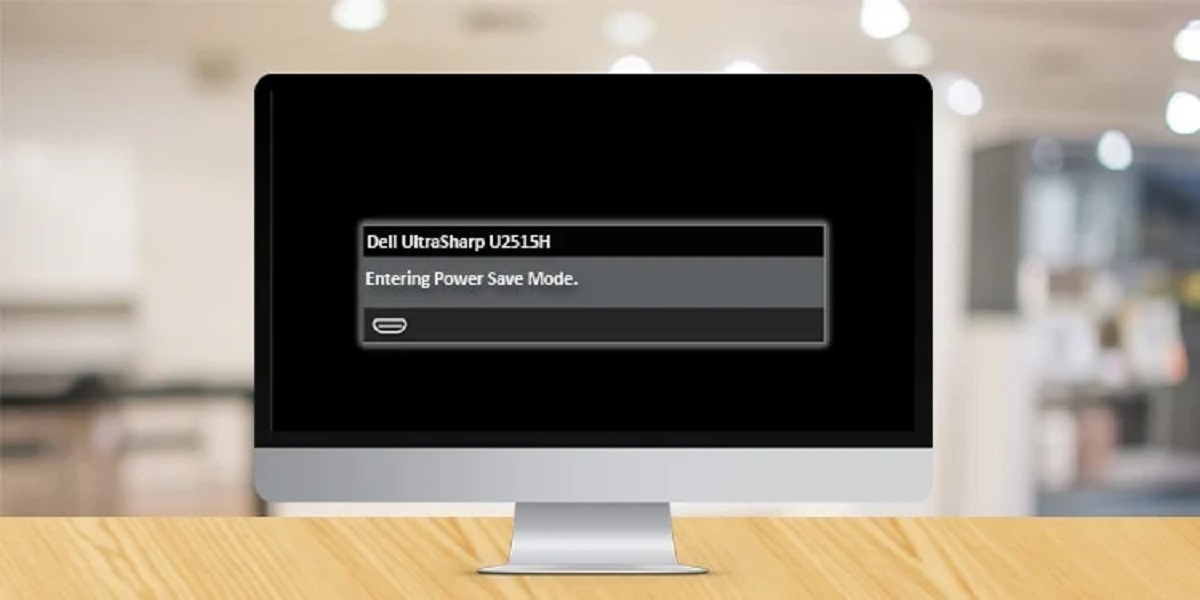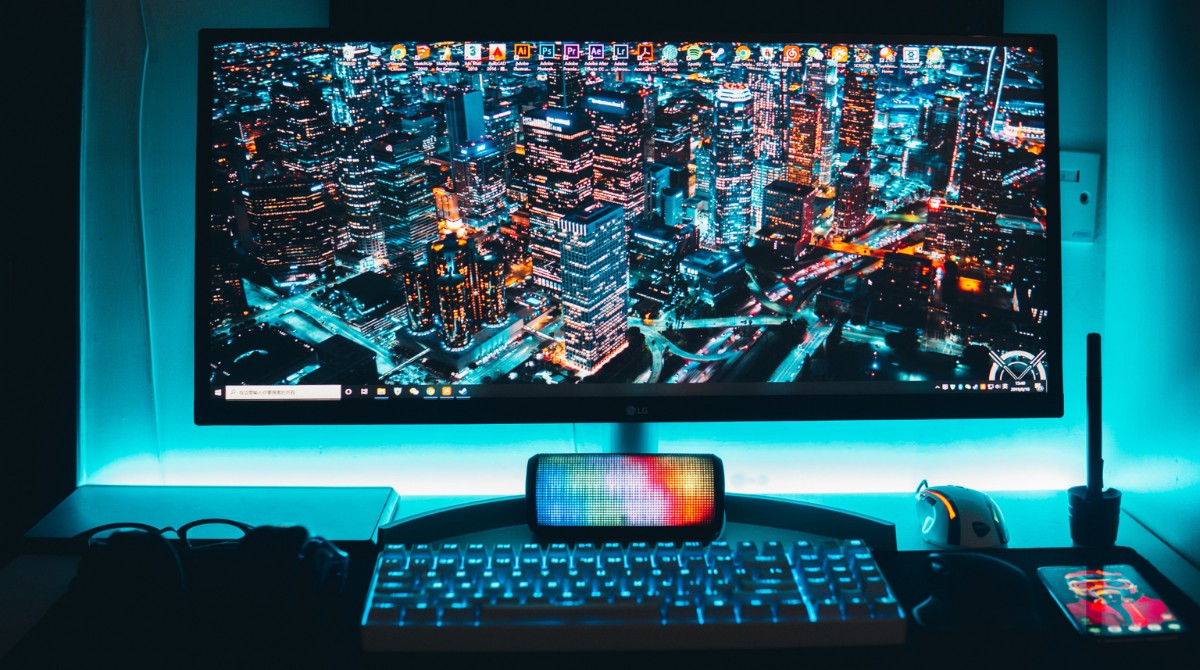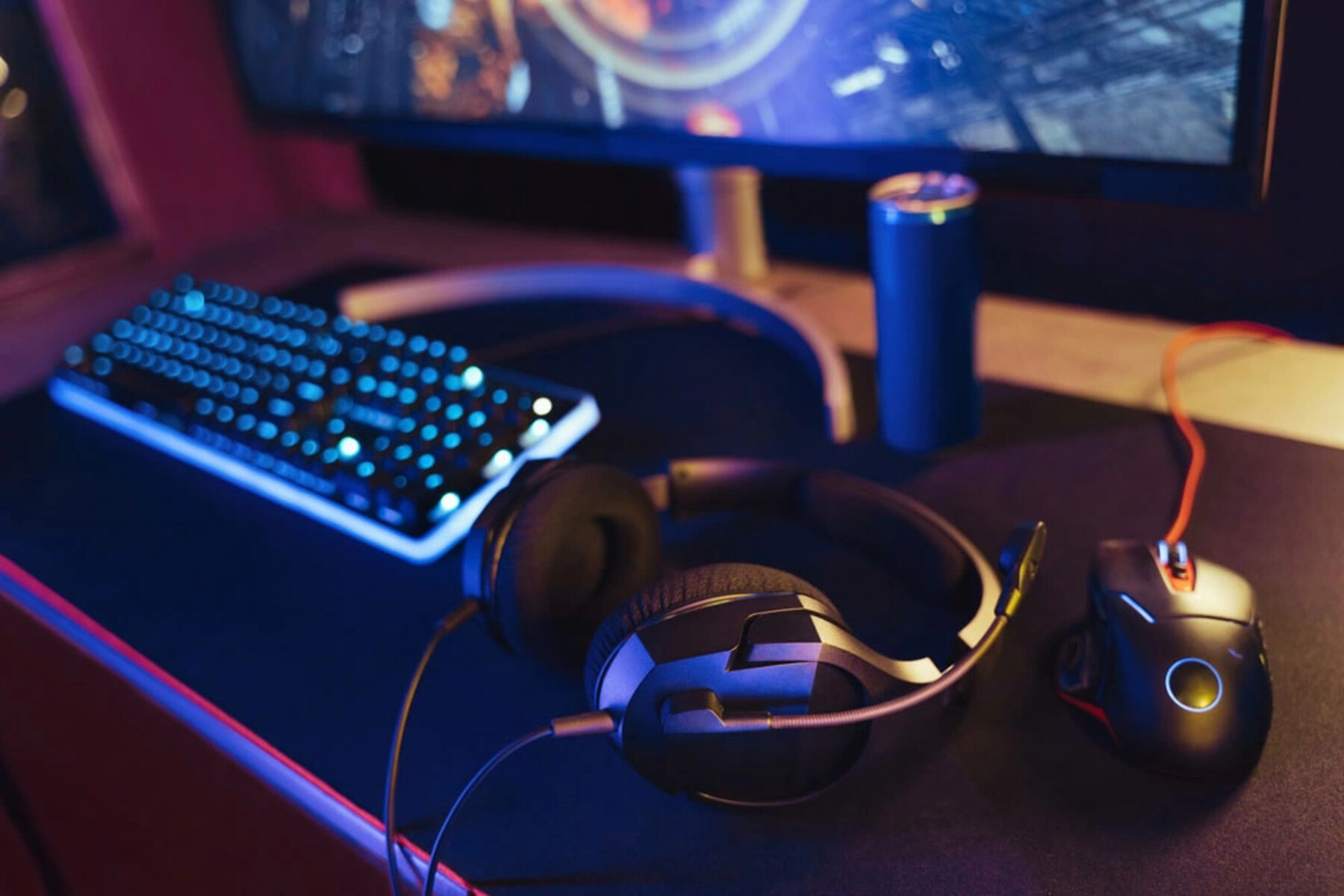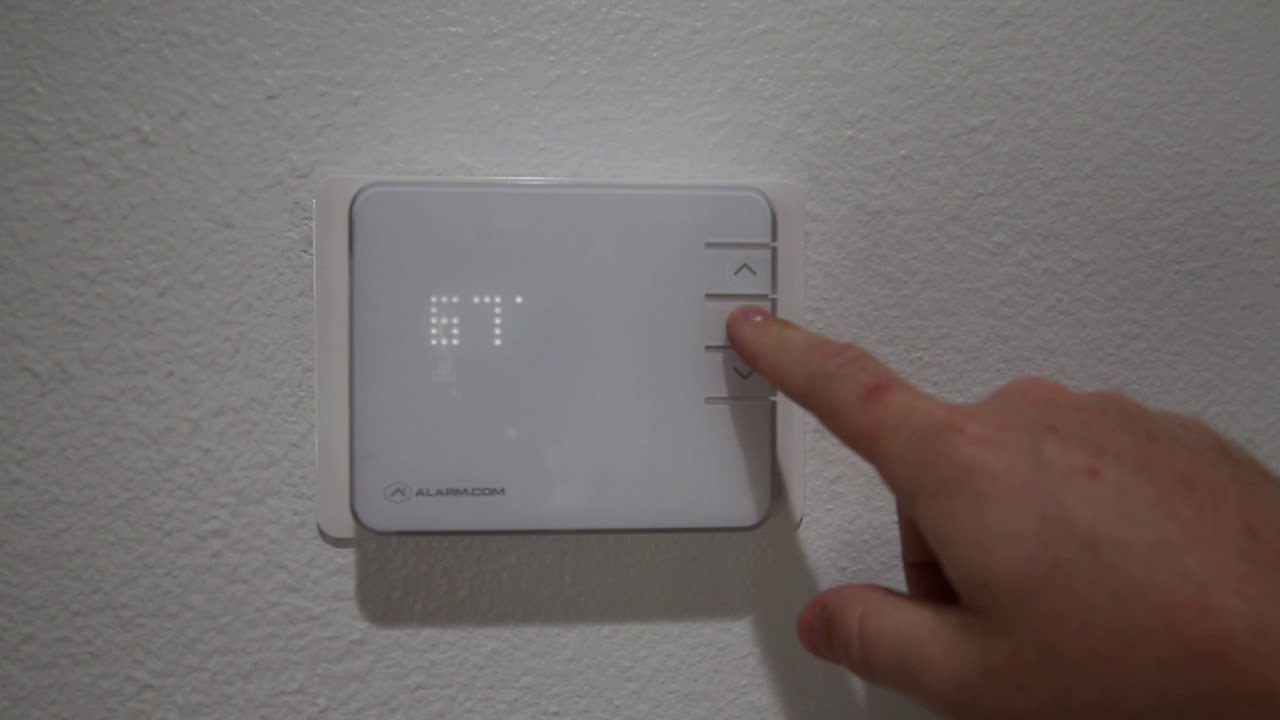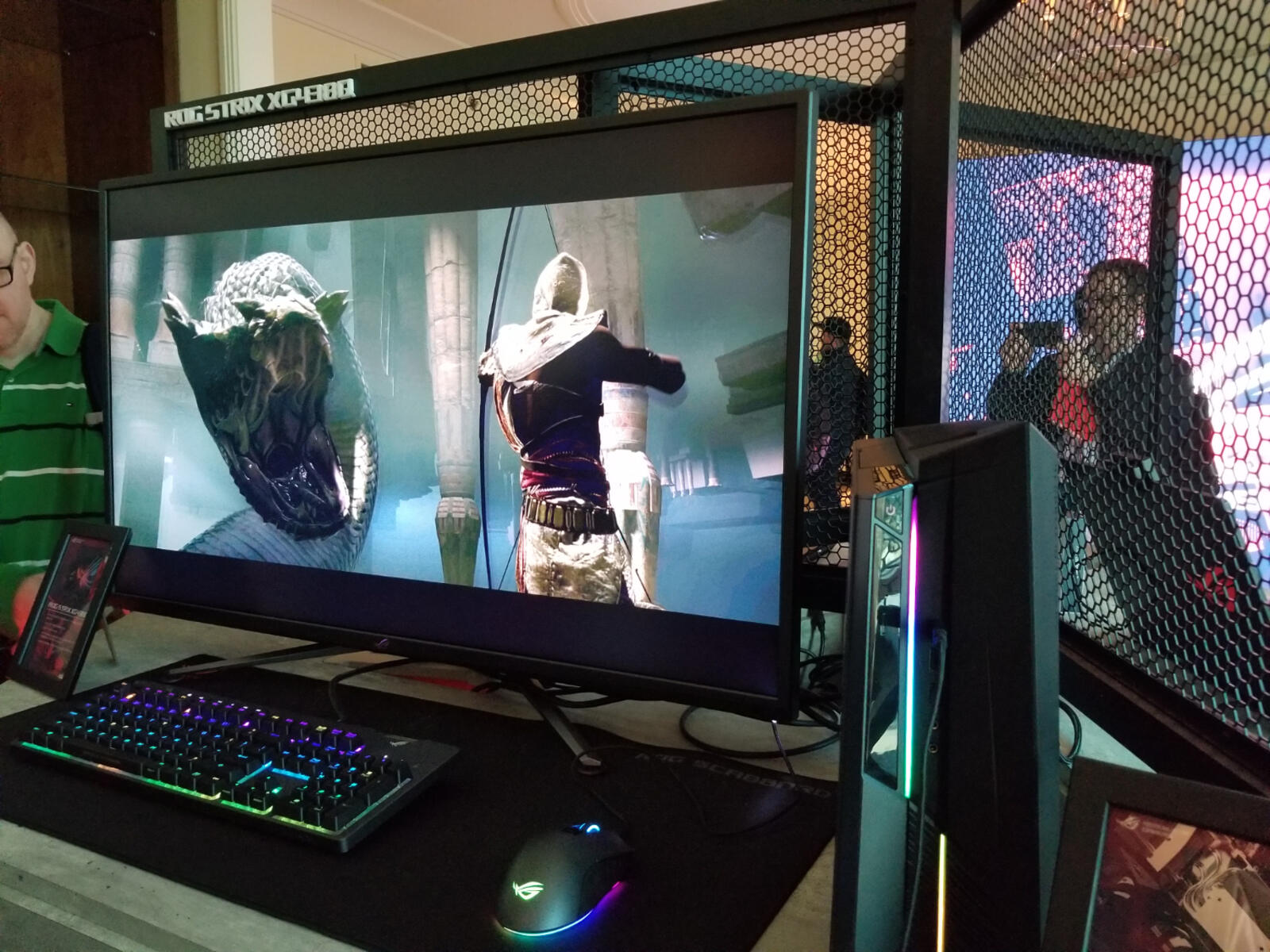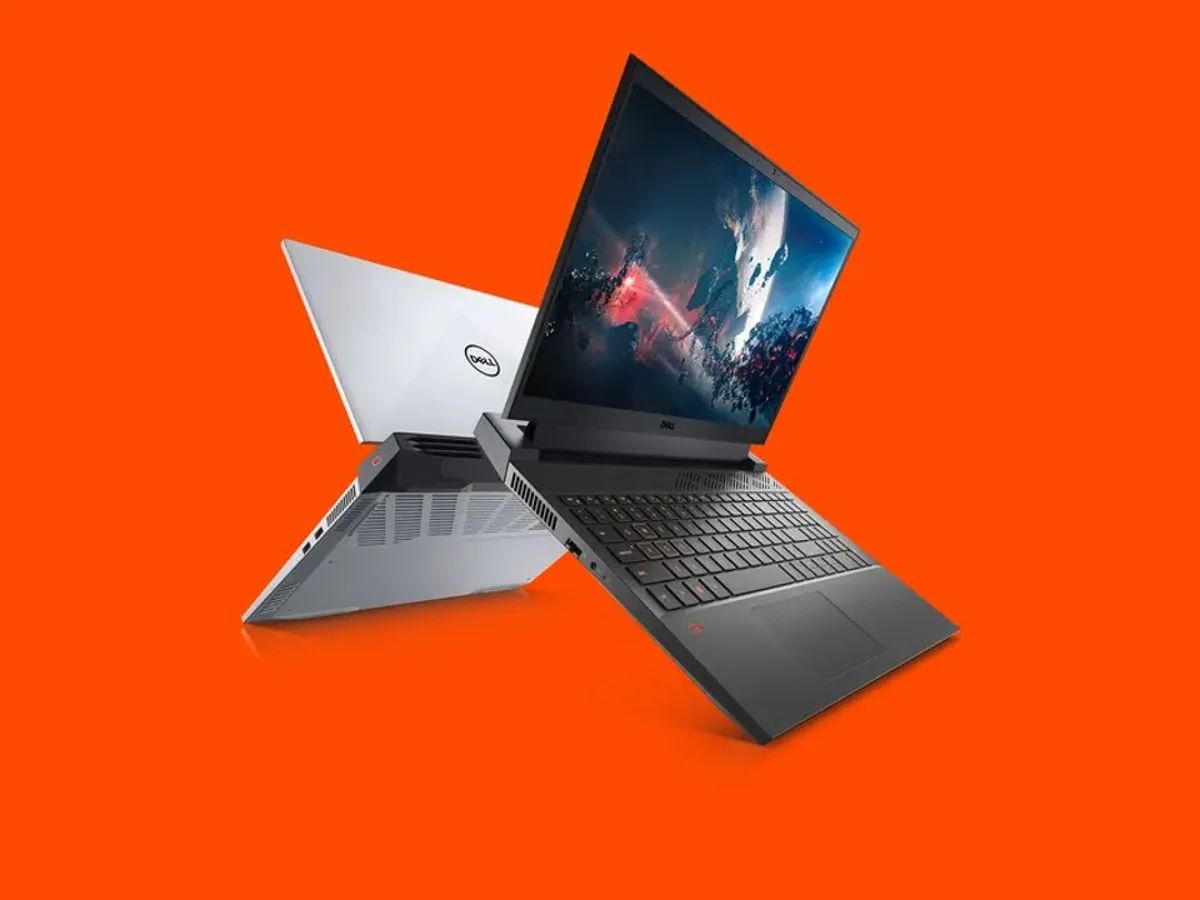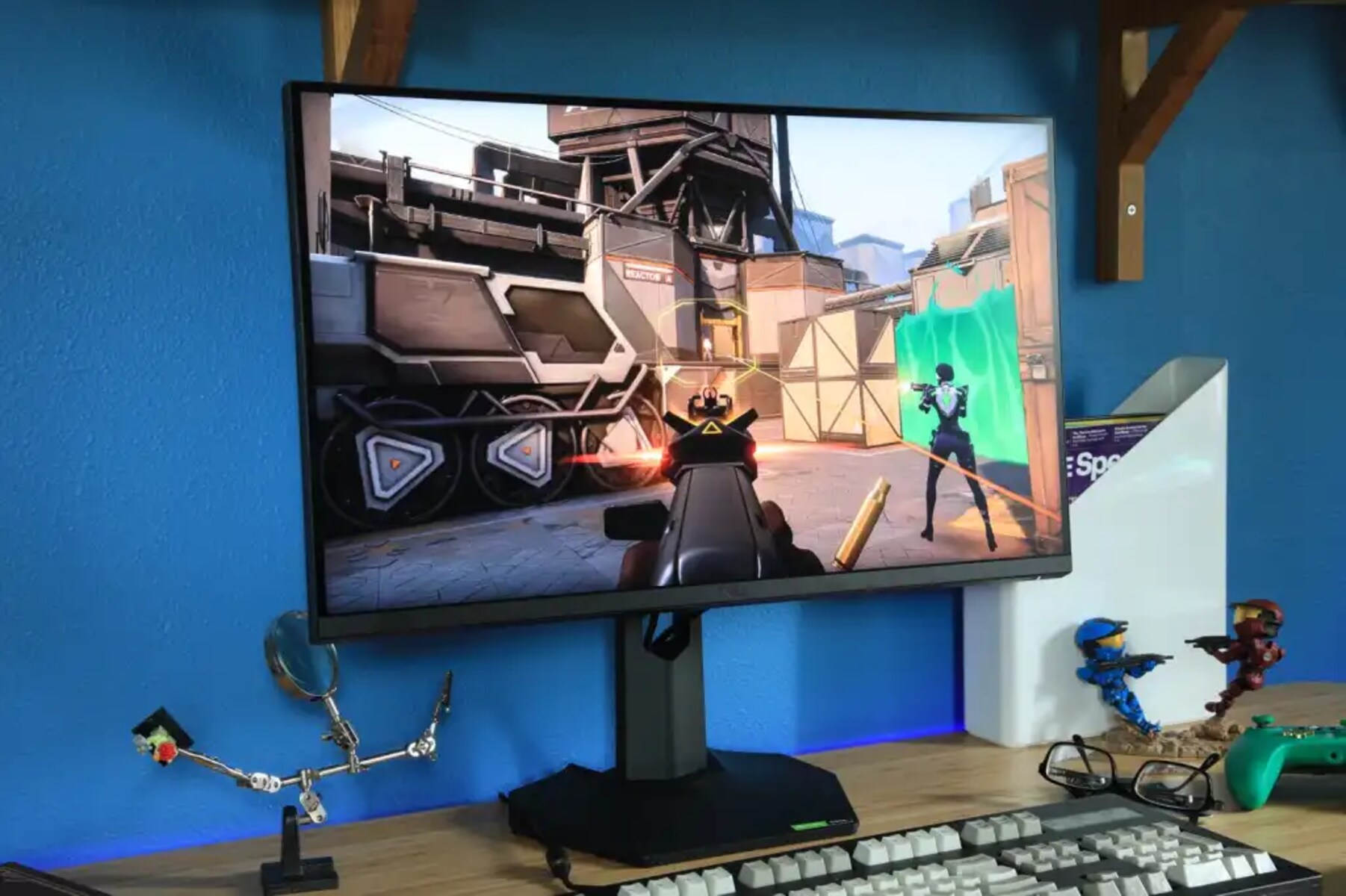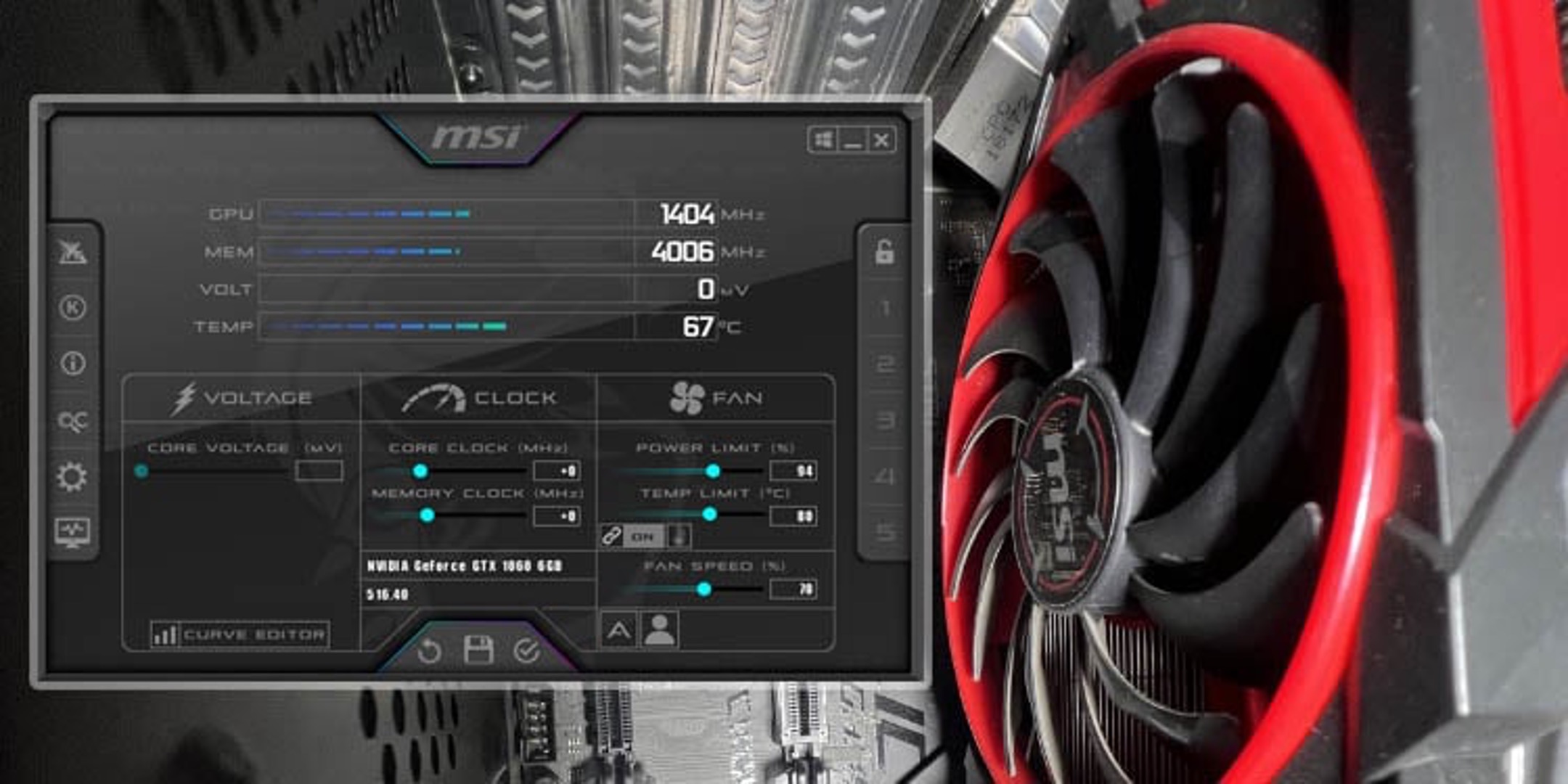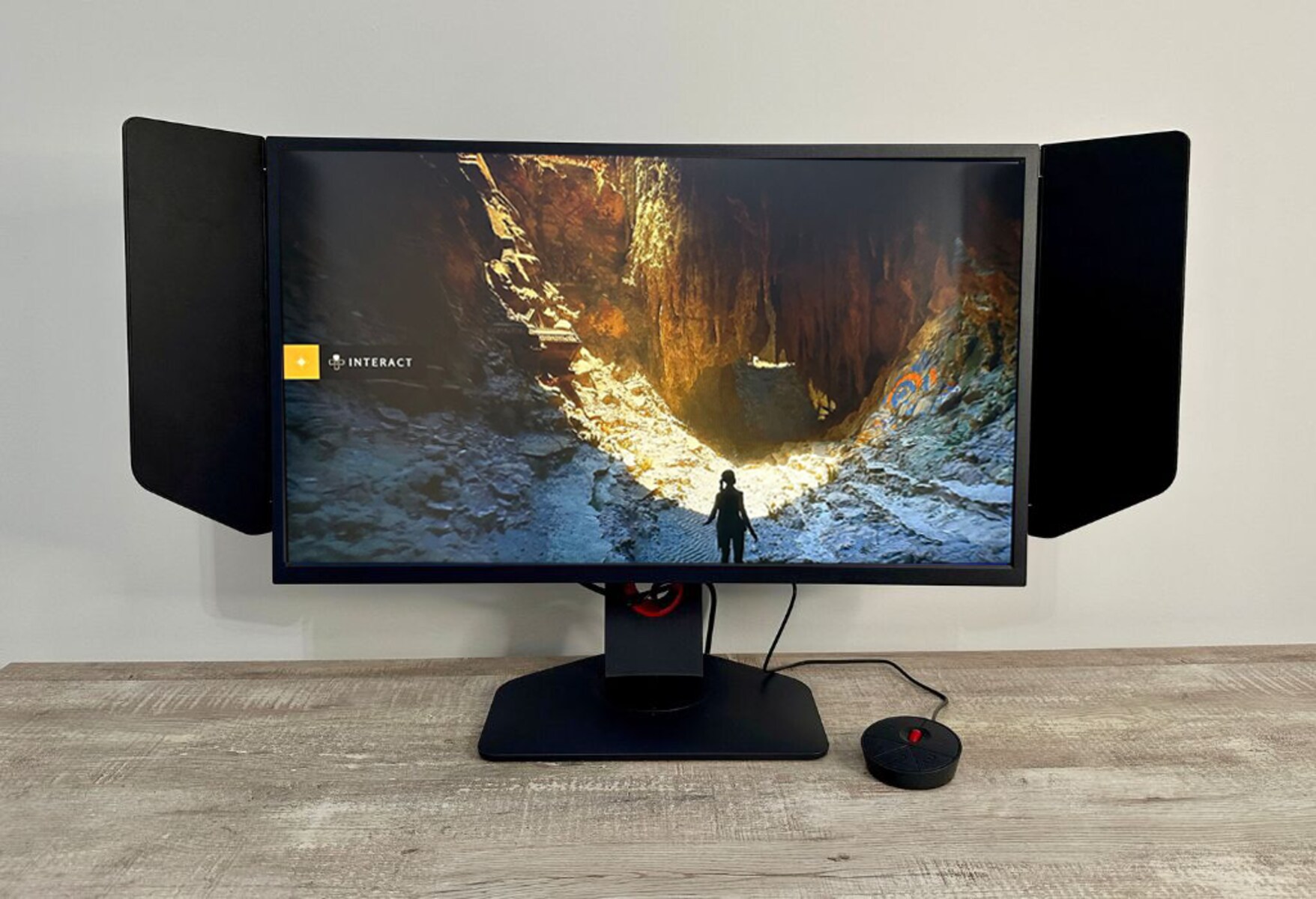Introduction
Welcome to our guide on how to get your monitor out of power saving mode. If you’ve encountered this issue, you’re not alone. It can be frustrating when your monitor suddenly goes into power saving mode and you’re unable to bring it back to life. However, with a few simple steps, you can resolve this problem and continue using your computer without any interruptions.
So, what exactly is power saving mode? Power saving mode is a feature that helps conserve energy by putting the monitor into a low-power state when it detects inactivity. This feature is beneficial for reducing electricity usage and extending the lifespan of your monitor. However, there may be instances where the monitor gets stuck in power saving mode or won’t wake up when you need it to.
In this guide, we will explore various methods to help you get your monitor out of power saving mode. These methods are easy to follow and can be applied to different operating systems, including Windows and MacOS. Whether you’re using a desktop computer or a laptop, these troubleshooting steps should help you resolve the issue.
Before we dive into the methods, it’s important to understand the reasons behind why your monitor might be stuck in power saving mode. Common causes include software glitches, incorrect power settings, faulty connections, or outdated graphics card drivers. By identifying the root cause, you’ll have a better understanding of how to tackle the issue.
Now that we have a brief understanding of power saving mode and the possible causes, let’s get started with the methods that can help you bring your monitor back to life. Follow along with each step, and hopefully, one of these solutions will work for you.
What is power saving mode?
Power saving mode, also known as sleep mode or standby mode, is a feature commonly found in monitors, computers, and other electronic devices. It is designed to conserve energy by putting the device into a low-power state when it detects inactivity for a certain period of time.
When a monitor enters power saving mode, it significantly reduces its power consumption, resulting in lower energy usage and increased energy efficiency. This feature is particularly beneficial for reducing electricity costs and minimizing the environmental impact of using electronic devices.
In power saving mode, the monitor’s screen turns off or goes into a sleep-like state, while other components such as the processor and memory continue to operate at a reduced power level. This allows the device to quickly resume its normal functionality when it receives input or when the user interacts with it.
While power saving mode is a useful feature, there are instances where the monitor may stay stuck in this state or fail to wake up even when activated. This can be frustrating, especially when you need to use your computer and the screen remains unresponsive.
It’s important to note that power saving mode is customizable and can be adjusted according to your preferences. Most operating systems allow users to set the time period of inactivity before the monitor enters power saving mode. This allows you to strike a balance between energy savings and usability.
Additionally, power saving mode can also be configured to automatically activate when the computer is not in use for a certain period of time, such as during lunch breaks or overnight. This further helps to save energy and prolong the lifespan of the monitor.
In the next sections, we will explore various methods to resolve the issue when the monitor gets stuck in power saving mode. By following these troubleshooting steps, you can hopefully regain control of your monitor and prevent it from staying in a low-power state indefinitely.
Reasons why the monitor is in power saving mode
There are several reasons why your monitor may be stuck in power saving mode. Here are some common causes to consider:
- Inactivity: The most common reason for the monitor to enter power saving mode is inactivity. If there is no user input detected for a certain period of time, the monitor will automatically go into a low-power state to conserve energy.
- Software Glitches: Sometimes, software glitches or conflicts can cause the monitor to get stuck in power saving mode. This can occur due to outdated drivers, incompatible software, or conflicts with other running programs.
- Incorrect Power Settings: If the power settings on your computer are configured incorrectly, it can cause the monitor to enter power saving mode too quickly or not wake up properly. Checking and adjusting the power settings can potentially resolve the issue.
- Faulty Connections: Loose or damaged cables can interrupt the communication between the computer and the monitor, causing it to enter power saving mode. Checking the connections and ensuring they are secure can help resolve this problem.
- Outdated Graphics Card Drivers: Outdated or incompatible graphics card drivers can also contribute to the monitor getting stuck in power saving mode. Updating the drivers to the latest version can often fix this issue.
- Hardware Malfunction: In rare cases, a hardware malfunction in either the monitor or the computer can cause the display to enter power saving mode and not wake up. In such situations, professional assistance may be necessary to resolve the problem.
By understanding these potential causes, you can start troubleshooting the issue more effectively. In the following sections, we will explore different methods to help you bring your monitor out of power saving mode and get it functioning properly once again.
Method 1: Pressing the monitor power button
One of the simplest methods to try when your monitor is stuck in power saving mode is to manually turn it off and then turn it back on using the power button. This method is quick and easy, and it often resolves the issue without any further troubleshooting.
Here’s how you can do it:
- Locate the power button on your monitor. It is typically located on the front or side of the monitor.
- Press and hold the power button for a few seconds until the monitor turns off completely.
- Wait for a few seconds, and then press the power button again to turn the monitor back on.
- Observe if the monitor wakes up from power saving mode and displays the expected content.
If this method is successful, your monitor should now be out of power saving mode and functioning normally. However, if the issue persists, you can move on to the next method to further troubleshoot the problem.
It’s important to note that in some cases, simply pressing the power button may not be enough to resolve the issue. This could be due to underlying software or hardware problems. In such situations, it’s advisable to try the remaining methods outlined in this guide for a more comprehensive solution.
Now that you’ve tried pressing the monitor power button, let’s move on to the next method, which involves moving the mouse or pressing any key on the keyboard to wake up the monitor from power saving mode.
Method 2: Moving the mouse or pressing any key on the keyboard
If pressing the monitor power button didn’t bring your monitor out of power saving mode, the next method you can try is moving the mouse or pressing any key on the keyboard. Sometimes, the monitor may not wake up from power saving mode due to a minor glitch or lack of input signal.
Here’s what you need to do:
- If the monitor is still on, but the screen is black or in sleep mode, move the mouse or wiggle it gently to see if the display wakes up.
- If the monitor appears to be completely off, press any key on the keyboard, such as the spacebar, Enter, or any letter key.
- Wait for a few seconds to allow the monitor to receive the input signal and check if the screen comes back to life.
- If the monitor remains unresponsive, try moving the mouse and pressing different keys on the keyboard to trigger the wake-up signal.
By moving the mouse or pressing any key on the keyboard, you are sending a signal to the computer to wake up the monitor from power saving mode. In most cases, this method is sufficient to resolve the issue and restore normal functionality to the display.
If the monitor still doesn’t respond or remains stuck in power saving mode, don’t worry. There are additional methods that we will explore in the following sections to further troubleshoot and resolve the problem.
Now that you’ve tried moving the mouse and pressing a key on the keyboard, let’s move on to the next method, which involves adjusting power settings in Windows.
Method 3: Adjusting power settings in Windows
If your monitor remains stuck in power saving mode, it’s worth checking the power settings in Windows to ensure they are configured correctly. Incorrect power settings can cause the monitor to enter power saving mode too quickly or prevent it from waking up properly when activated.
Follow these steps to adjust the power settings:
- Click on the “Start” menu or press the Windows key on your keyboard to open the Start menu.
- Type “Power & Sleep Settings” (without quotes) in the search bar and click on the matching result that appears.
- In the Power & Sleep Settings window, review the “Screen” section and check the timing settings for “Screen off” and “Sleep” to ensure they are set to your desired values.
- If the timing settings seem too short or not aligned with your usage patterns, you can adjust them by clicking on the drop-down menus and selecting the desired values. You may choose longer times or even set them to “Never” if you prefer.
- After adjusting the power settings, close the Power & Sleep Settings window and check if the monitor wakes up from power saving mode by moving the mouse or pressing a key on the keyboard.
By adjusting the power settings in Windows, you are customizing the timing at which the monitor enters power saving mode. Making sure the timing suits your needs can help prevent the monitor from going into power saving mode too quickly or unnecessarily.
If adjusting the power settings doesn’t resolve the issue and your monitor is still stuck in power saving mode, there are additional methods to explore. In the following sections, we will guide you through further troubleshooting steps to bring your monitor back to life.
Now that you’ve adjusted the power settings in Windows, let’s move on to the next method which involves checking the connection between the computer and the monitor.
Method 4: Checking the connection between the computer and monitor
When your monitor is stuck in power saving mode, it’s essential to ensure that the connection between the computer and the monitor is secure and functioning correctly. A loose or faulty connection can prevent the monitor from receiving the necessary signals to wake up from power saving mode.
Follow these steps to check the connection between the computer and the monitor:
- Turn off the computer and the monitor.
- Locate the cable that connects the monitor to the computer. This is typically a VGA, HDMI, DisplayPort, or DVI cable.
- Check both ends of the cable to ensure they are plugged in securely and firmly into the corresponding ports on the monitor and the computer.
- If the cable appears loose, disconnect it from both ends and reconnect it, ensuring a secure connection.
- If you are using multiple monitors, check the cable connections for all monitors.
- Once you have confirmed that the connections are secure, turn on the computer and the monitor.
- Observe if the monitor wakes up from power saving mode and displays the expected content.
By checking the connection between the computer and the monitor, you are making sure that the communication channels are intact and properly established. Secure connections ensure that the monitor receives the necessary signals to wake up and display the content from the computer.
If the monitor is still stuck in power saving mode or remains unresponsive, there are further troubleshooting methods to try. In the following sections, we will explore additional steps to help you resolve the issue.
Now that you’ve checked the connection between the computer and the monitor, let’s move on to the next method, which involves updating the graphics card drivers.
Method 5: Updating graphics card drivers
Outdated or incompatible graphics card drivers can sometimes be the cause of a monitor being stuck in power saving mode. Updating the graphics card drivers to the latest version can help resolve this issue and ensure proper communication between the computer and the monitor.
Follow these steps to update the graphics card drivers:
- Press the Windows key + X on your keyboard and select “Device Manager” from the menu that appears, or search for “Device Manager” in the Start menu search bar.
- In the Device Manager window, expand the “Display adapters” category to see a list of installed graphics cards.
- Right-click on the graphics card that is currently in use and select “Update driver” from the context menu.
- In the Update Drivers window, select the option to automatically search for updated driver software. Windows will then search for and install the latest driver available for your graphics card.
- Alternatively, you can download the latest driver for your graphics card directly from the manufacturer’s website. Visit their support page, locate the driver download section, and download the appropriate driver for your graphics card model and operating system.
- Once the driver installation is complete, restart your computer and check if the monitor wakes up from power saving mode.
By updating the graphics card drivers, you ensure that your computer can effectively communicate with the monitor and provide the necessary signals to wake it up from power saving mode. This can resolve any compatibility issues or bugs that may be preventing the monitor from functioning properly.
If updating the graphics card drivers doesn’t resolve the issue, there are additional troubleshooting methods to try. In the following sections, we will explore further steps to help you bring your monitor back to normal functionality.
Now that you’ve updated the graphics card drivers, let’s move on to the next method, which involves troubleshooting using Windows Device Manager.
Method 6: Troubleshooting using Windows Device Manager
If your monitor is still stuck in power saving mode, you can try troubleshooting the issue using the Windows Device Manager. This tool allows you to identify and resolve problems with hardware devices, including the monitor, by diagnosing potential conflicts or driver issues.
Follow these steps to troubleshoot using Windows Device Manager:
- Press the Windows key + X on your keyboard and select “Device Manager” from the menu that appears, or search for “Device Manager” in the Start menu search bar.
- In the Device Manager window, look for any entries marked with a yellow exclamation mark icon or labeled as “Unknown device”. These indicate hardware-related issues.
- Right-click on the problematic device and select “Update driver” from the context menu to check for a driver update. If an update is available, proceed with the installation.
- If updating the driver doesn’t resolve the issue, right-click on the problematic device again and select “Uninstall device” from the context menu. Confirm the uninstallation.
- Restart your computer. Windows will automatically attempt to reinstall the device drivers. Follow any on-screen instructions that may appear.
- Check if the monitor wakes up from power saving mode after the restart.
Troubleshooting using Windows Device Manager can help identify and resolve any conflicts or driver-related issues with the monitor. By updating or uninstalling the problematic device drivers, you can potentially overcome the power saving mode problem and restore normal functionality to the monitor.
If the monitor remains stuck in power saving mode or none of the troubleshooting methods have been successful, there may be a more complex hardware or software issue at play. In such cases, it’s advisable to seek professional assistance or consult the manufacturer’s support for further guidance.
Now that you’ve troubleshooted using Windows Device Manager, let’s summarize the methods we’ve covered so far and the important points to consider.
Conclusion
Getting your monitor out of power saving mode is crucial for uninterrupted computer usage. Throughout this guide, we have explored various methods to help you resolve this issue. Let’s recap the steps we covered:
- Pressing the monitor power button: Manually turning off and back on the monitor can often resolve power saving mode issues.
- Moving the mouse or pressing any key on the keyboard: Sending input signals to the computer can wake up the monitor from power saving mode.
- Adjusting power settings in Windows: Configuring power settings to suit your needs and preferences can prevent the monitor from entering power saving mode too quickly.
- Checking the connection between the computer and monitor: Ensuring secure and proper connections between the computer and monitor can prevent communication issues.
- Updating graphics card drivers: Outdated or incompatible graphics card drivers can be the cause of monitor issues, and updating them can resolve the problem.
- Troubleshooting using Windows Device Manager: Diagnosing and resolving hardware conflicts or driver issues through the Device Manager can potentially fix power saving mode problems.
By following these troubleshooting methods, you should be able to bring your monitor out of power saving mode and continue using it without interruptions. However, if the issue persists or if you encounter more complex hardware or software problems, it is recommended to seek professional assistance.
Remember to regularly update your drivers and monitor the power settings on your computer to ensure optimal performance. By maintaining a healthy system, you can minimize the chances of encountering power saving mode issues in the future.
We hope this guide has been helpful in resolving the monitor power saving mode problem, and we wish you hassle-free computing experiences ahead!







